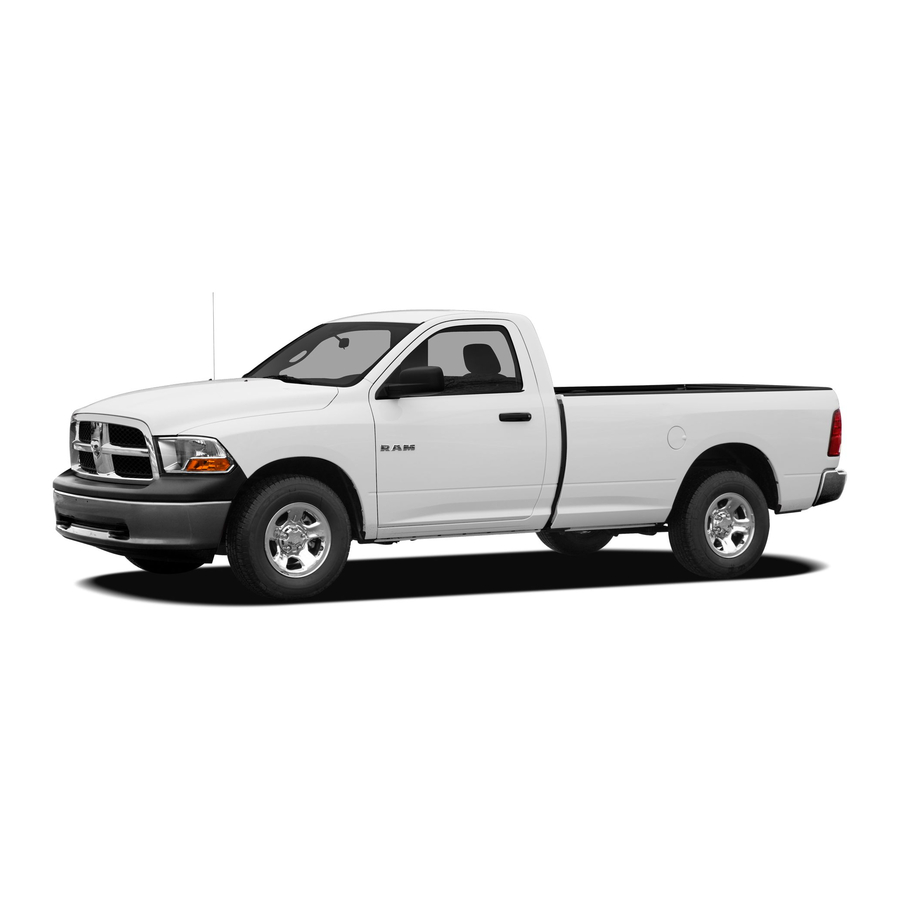
Table of Contents
Advertisement
Quick Links
Advertisement
Chapters
Table of Contents

Summarization of Contents
Introduction
Warnings and Cautions
Crucial safety information regarding operating procedures and potential vehicle damage or injury.
Vehicle Identification Number
Details on the VIN location, important for registration, insurance, and vehicle identification.
Vehicle Modifications/Alterations
Warning about modifications affecting safety, roadworthiness, and potential accident risks.
Things to Know Before Starting Your Vehicle
A Word About Your Keys
Information on vehicle keys, key codes, and ordering duplicate keys from the dealer.
Sentry Key
Explanation of the Sentry Key immobilizer system preventing unauthorized vehicle operation.
Occupant Restraints
Details on safety features like seat belts and airbags, ensuring passenger safety and proper usage.
Safety Tips
General safety advice for operating the vehicle, including passenger and cargo safety.
Understanding the Features of Your Vehicle
Mirrors
Instructions on adjusting rearview and side mirrors for optimal visibility and safety.
uconnect phone — If Equipped
Information on the voice-activated, hands-free vehicle communication system.
Lights
Operation of headlights, interior lights, and other vehicle lighting systems for visibility and safety.
Electronic Speed Control — If Equipped
How to use and operate the cruise control system for efficient highway driving.
Understanding Your Instrument Panel
Instrument Panel Features
Overview of the vehicle's instrument panel layout and key features for different models.
Instrument Cluster Description
Detailed explanation of the base and premium instrument clusters, including gauge functions and indicator lights.
Climate Controls
Details on operating the heating, ventilation, and air conditioning system for cabin comfort.
Starting and Operating
Starting Procedures
Step-by-step guide for starting the vehicle, including normal starting and what to do if the engine fails to start.
Automatic Transmission
Instructions on operating the automatic transmission, including gear selection and cautions.
Four-Wheel Drive Operation — If Equipped
Explanation of operating the transfer case in different modes for various traction conditions.
Tire Safety Information
Comprehensive information on tire markings, safety, inflation, and care.
What to Do in Emergencies
Hazard Warning Flasher
Instructions on using the hazard warning flasher for emergency signaling and safety.
Jacking Instructions
Critical safety procedures and warnings for safely jacking up the vehicle for tire changes.
Jump-Starting Procedures
Safe and proper procedures for jump-starting a vehicle with a dead battery.
Towing A Disabled Vehicle
Guidelines and precautions for safely towing a disabled vehicle.
Maintaining Your Vehicle
Engine Oil
Guidance on checking engine oil level, oil selection, and viscosity for optimal engine health.
Cooling System
Information on checking and maintaining the engine cooling system, including coolant type and level.
Brake System
Details on checking brake fluid level and understanding brake system warnings and operation.
Fluids And Capacities
A comprehensive list of vehicle fluids, capacities, and recommended types for maintenance.
Maintenance Schedules
Maintenance Schedule
Overview of scheduled maintenance services based on mileage and time intervals.
Required Maintenance Intervals
Detailed schedule of required maintenance tasks at specific mileage and time intervals.
If You Need Consumer Assistance
If You Need Assistance
Information on how to get assistance from the manufacturer and authorized dealers for vehicle issues.
Reporting Safety Defects
Procedures for reporting vehicle safety defects to NHTSA and the manufacturer.
















Need help?
Do you have a question about the 2009 Ram 3500 and is the answer not in the manual?
Questions and answers